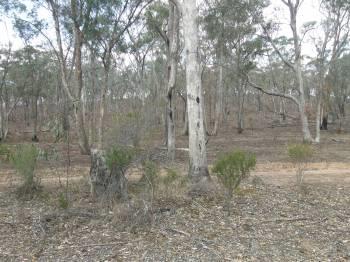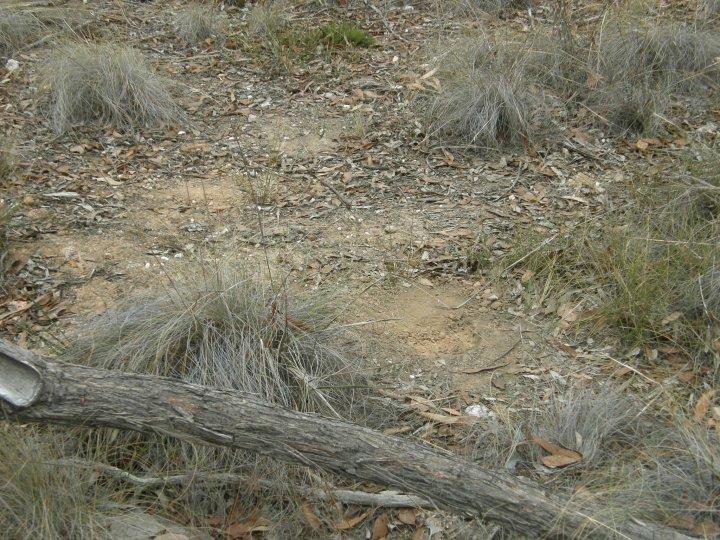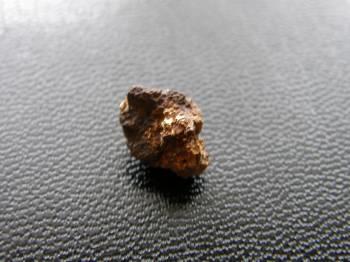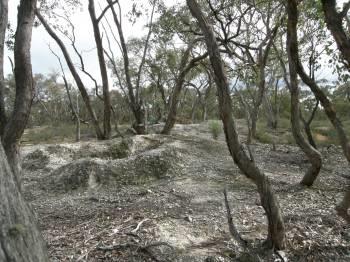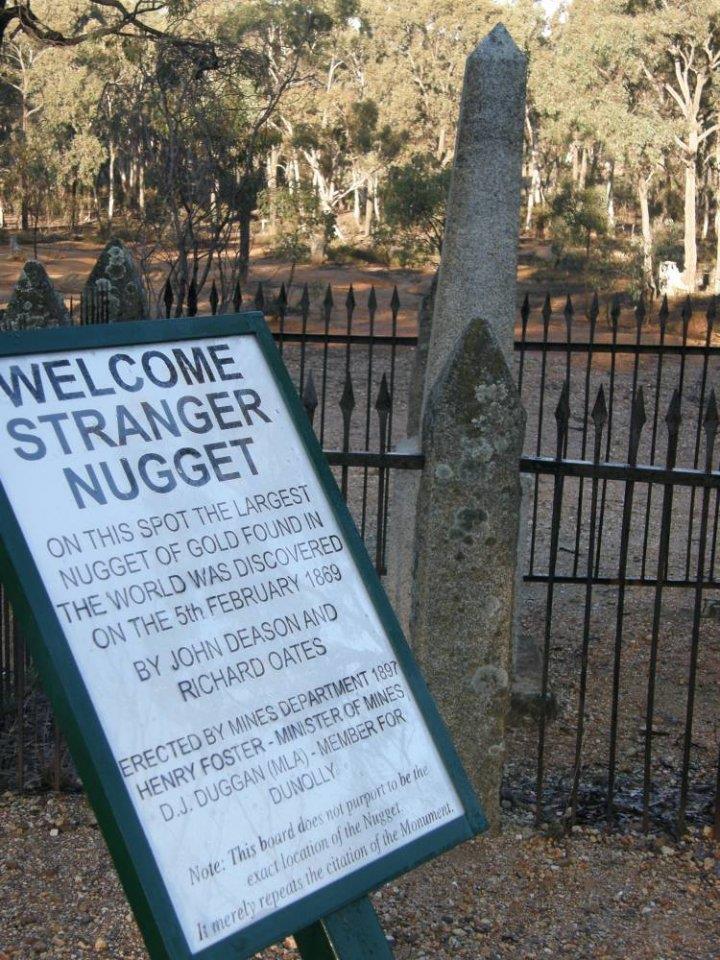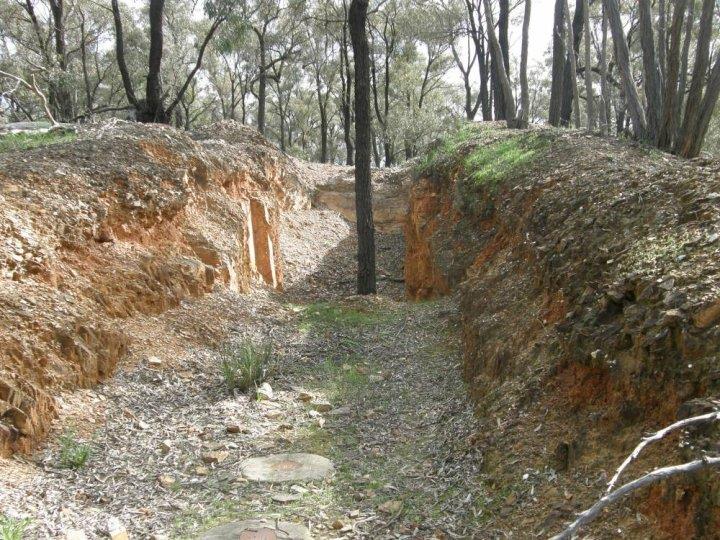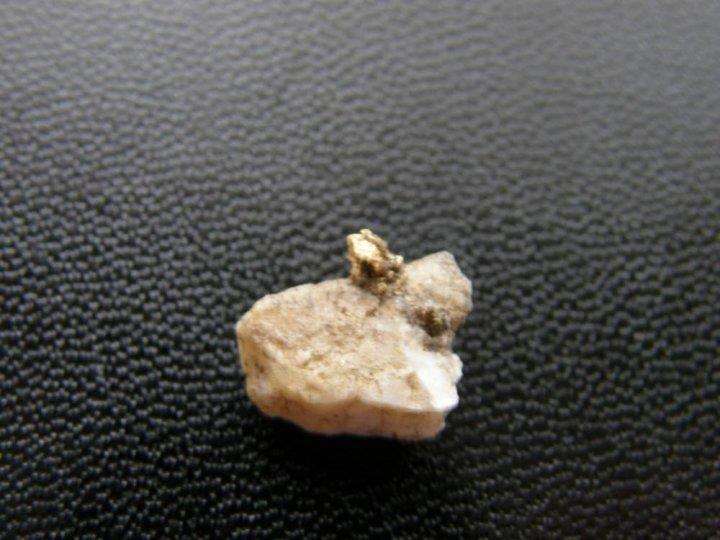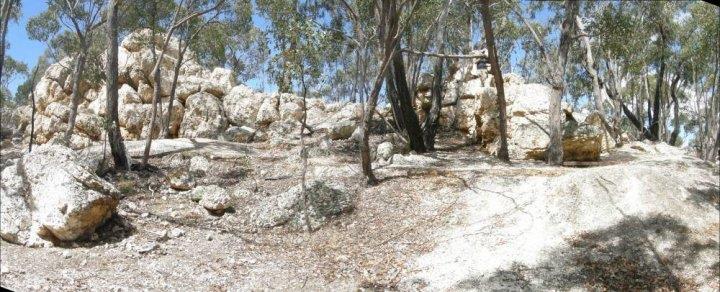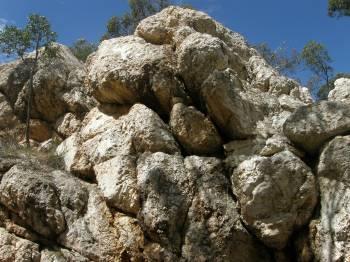1. Puddlers
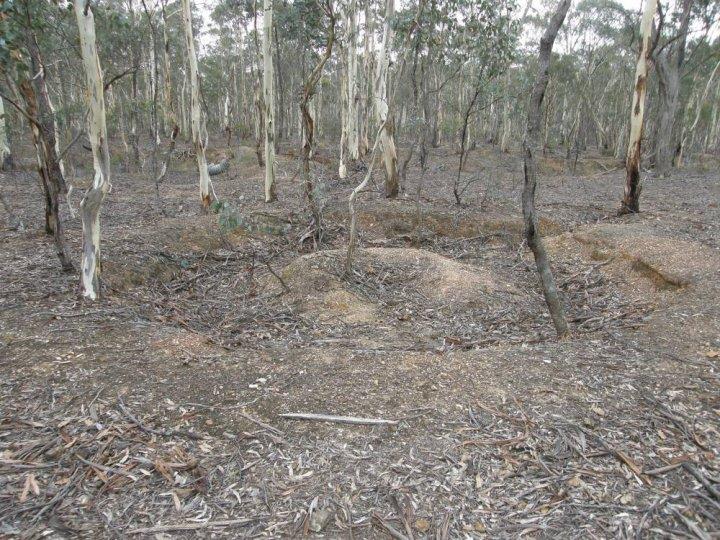
For new starters, deciphering goldfields can be difficult when first starting out - what was actually going on??. There are some indicators that will highlight if the area was gold bearing for the old timers. Sometimes, research will tell us that the area was rich in gold. At times you will find things that are not marked or mentioned in maps and old reports - for example this puddler and diggings. What does the puddler tell me? The area was rich enough for the old timers to set one up for breaking up the gold bearing clay soils. The gold bearing dirt may have been brought to the area but generally they are in situ - water was the key. At about 1 o'clock on the puddler you can see where the slurry was drained off. The outside ring was where the horse/pony walked and the inside mound was where the guide post was located. These areas are well worth detecting and there may be throw outs, relics and the like. There will also be horse shoes and nails so a descriminator on a DD may be required. You can see a run of diggings in the background. The puddler itself should best be left alone as they are usually historically significant. Another thing was can see in the picture is the age of the trees. The ones on the puddler are about the same age and size as the rest of the area - the original trees were used for props, shafts, fire-wood etc. Look for the older trees - they may original or older and may be where the original soil level was - and also worth detecting around these areas.

For new starters, deciphering goldfields can be difficult when first starting out - what was actually going on??. There are some indicators that will highlight if the area was gold bearing for the old timers. Sometimes, research will tell us that the area was rich in gold. At times you will find things that are not marked or mentioned in maps and old reports - for example this puddler and diggings. What does the puddler tell me? The area was rich enough for the old timers to set one up for breaking up the gold bearing clay soils. The gold bearing dirt may have been brought to the area but generally they are in situ - water was the key. At about 1 o'clock on the puddler you can see where the slurry was drained off. The outside ring was where the horse/pony walked and the inside mound was where the guide post was located. These areas are well worth detecting and there may be throw outs, relics and the like. There will also be horse shoes and nails so a descriminator on a DD may be required. You can see a run of diggings in the background. The puddler itself should best be left alone as they are usually historically significant. Another thing was can see in the picture is the age of the trees. The ones on the puddler are about the same age and size as the rest of the area - the original trees were used for props, shafts, fire-wood etc. Look for the older trees - they may original or older and may be where the original soil level was - and also worth detecting around these areas.




